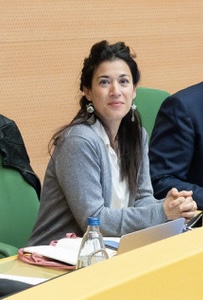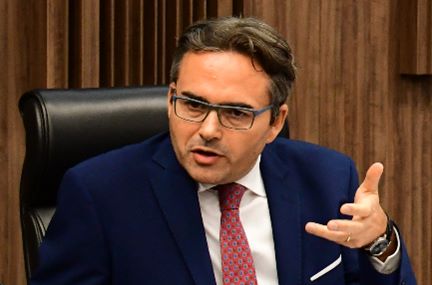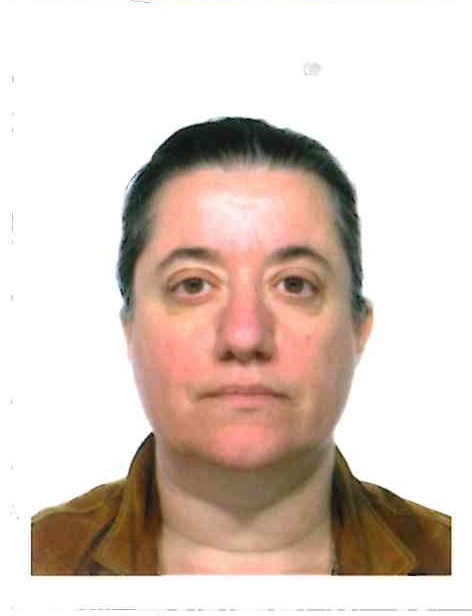Studying at the University of Verona
Here you can find information on the organisational aspects of the Programme, lecture timetables, learning activities and useful contact details for your time at the University, from enrolment to graduation.
Academic calendar
The academic calendar shows the deadlines and scheduled events that are relevant to students, teaching and technical-administrative staff of the University. Public holidays and University closures are also indicated. The academic year normally begins on 1 October each year and ends on 30 September of the following year.
Course calendar
The Academic Calendar sets out the degree programme lecture and exam timetables, as well as the relevant university closure dates..
| Period | From | To |
|---|---|---|
| 1° periodo di lezioni | Oct 1, 2018 | Dec 14, 2018 |
| Periodo riservato ad eventuali recuperi di lezioni - dicembre 2018 | Dec 15, 2018 | Dec 18, 2018 |
| 2° periodo di lezioni - febbraio/aprile 2019 | Feb 11, 2019 | Apr 15, 2019 |
| 2° periodo di lezioni - aprile/maggio 2019 | Apr 24, 2019 | May 8, 2019 |
| Periodo riservato ad eventuali recuperi di lezioni - maggio 2019 | May 9, 2019 | May 10, 2019 |
| Session | From | To |
|---|---|---|
| Sessione straordinaria - studenti f.c. - dicembre 2018 | Dec 19, 2018 | Dec 22, 2018 |
| Sessione invernale – 1° appello | Jan 8, 2019 | Jan 17, 2019 |
| Sessione invernale – 2° appello | Jan 29, 2019 | Feb 7, 2019 |
| Sessione straordinaria - studenti f.c. - aprile 2019 | Apr 16, 2019 | Apr 18, 2019 |
| Sessione estiva – 1° appello | May 11, 2019 | May 23, 2019 |
| Sessione estiva – 2° appello | Jun 7, 2019 | Jun 18, 2019 |
| Sessione estiva – 3° appello | Jul 3, 2019 | Jul 13, 2019 |
| Sessione autunnale – 1° appello | Aug 26, 2019 | Sep 4, 2019 |
| Sessione autunnale – 2° appello | Sep 19, 2019 | Sep 30, 2019 |
| Session | From | To |
|---|---|---|
| Sessione autunnale – ottobre 2018 | Oct 22, 2018 | Oct 23, 2018 |
| Sessione invernale | Feb 8, 2019 | Feb 8, 2019 |
| Sessione invernale – marzo 2019 | Mar 18, 2019 | Mar 20, 2019 |
| Sessione estiva | Jun 25, 2019 | Jun 26, 2019 |
| Period | From | To |
|---|---|---|
| Festa di Ognissanti | Nov 1, 2018 | Nov 1, 2018 |
| Festa dell’Immacolata | Dec 8, 2018 | Dec 8, 2018 |
| Vacanze di Natale | Dec 24, 2018 | Jan 6, 2019 |
| VACANZE DI PASQUA | Apr 19, 2019 | Apr 23, 2019 |
| FESTA DELLA LIBERAZIONE | Apr 25, 2019 | Apr 25, 2019 |
| Festa del lavoro | May 1, 2019 | May 1, 2019 |
| Festa del Santo Patrono | May 21, 2019 | May 21, 2019 |
| Festa della Repubblica | Jun 2, 2019 | Jun 2, 2019 |
| VACANZE ESTIVE | Aug 13, 2019 | Aug 18, 2019 |
Exam calendar
Exam dates and rounds are managed by the relevant Law Teaching and Student Services Unit.
To view all the exam sessions available, please use the Exam dashboard on ESSE3.
If you forgot your login details or have problems logging in, please contact the relevant IT HelpDesk, or check the login details recovery web page.
Academic staff
 mariacaterina.baruffi@univr.it
mariacaterina.baruffi@univr.it
 045 - 8425324
045 - 8425324

Dalla Massara Tommaso
 tommaso.dallamassara@univr.it
tommaso.dallamassara@univr.it
 +39 045 8028810
+39 045 8028810
 roberto.flor@univr.it
roberto.flor@univr.it
 giorgia.guerra@univr.it
giorgia.guerra@univr.it
 rita.maggi@univr.it
rita.maggi@univr.it
 lorenzo.salvatore@univr.it
lorenzo.salvatore@univr.it
 marcello.stella@univr.it
marcello.stella@univr.it
Strano Silvana
 silvana.stranoligato@univr.it
silvana.stranoligato@univr.it
 +39 045 8028856
+39 045 8028856
 claudio.tomazzoli@univr.it
claudio.tomazzoli@univr.it
Study Plan
The Study Plan includes all modules, teaching and learning activities that each student will need to undertake during their time at the University.
Please select your Study Plan based on your enrollment year.
1° Year
| Modules | Credits | TAF | SSD |
|---|
Principles of economics
Roman Law Institutions
History of Medieval and Modern Law
2° Year activated in the A.Y. 2019/2020
| Modules | Credits | TAF | SSD |
|---|
1 module to be chosen among the following1 module to be chosen among the following3° Year activated in the A.Y. 2020/2021
| Modules | Credits | TAF | SSD |
|---|
4° Year activated in the A.Y. 2021/2022
| Modules | Credits | TAF | SSD |
|---|
1 module to be chosen among the following5° Year activated in the A.Y. 2022/2023
| Modules | Credits | TAF | SSD |
|---|
5 modules to be chosen among the following| Modules | Credits | TAF | SSD |
|---|
Principles of economics
Roman Law Institutions
History of Medieval and Modern Law
| Modules | Credits | TAF | SSD |
|---|
1 module to be chosen among the following1 module to be chosen among the following| Modules | Credits | TAF | SSD |
|---|
| Modules | Credits | TAF | SSD |
|---|
1 module to be chosen among the following| Modules | Credits | TAF | SSD |
|---|
5 modules to be chosen among the followingLegend | Type of training activity (TTA)
TAF (Type of Educational Activity) All courses and activities are classified into different types of educational activities, indicated by a letter.
Constitutional law 2 (2019/2020)
Teaching code
4S02526
Academic staff
Coordinator
Credits
9
Language
Italian
Scientific Disciplinary Sector (SSD)
IUS/08 - CONSTITUTIONAL LAW
Period
2° periodo di lezioni - aprile/maggio 2020, 2° periodo di lezioni - febbraio/aprile 2020
Learning outcomes
PART I – SOURCES OF LAW
The aim of this course is, firstly, to provide students with the basic tools for understanding the sources of law. Then, it aims to transmit the necessary knowledge to solve problems related to the application of the sources of law in actual cases.
PART II – THE JUDICIAL POWER
The course aims to provide students with the basic theoretical tools for understanding the structure and dynamics of the judicial power. Then, to transmit the necessary knowledge to the analysis and interpretation of the rules contained in Title IV of Part II of the Constitution. Finally, to give students the opportunity to learn from case studies by attending conferences regarding judicial institutions.
Program
The following subjects will be covered during the course:
1) Sources of Law
- General sources: introductory notions
- Internal sources:
a) the Constitution and its sources
b) State sources (focusing on government acts with the force of law: decree law and legislative decree).
c) autonomous sources (regional sources in particular)
- international and foreign sources
- European sources
2) The Judiciary
- introductory notions: jurisdictions and judges
- Ordinary courts: organization and functions
- Special courts: typology and functions
- The judicial system
- Guarantees of independence and autonomy, and the concept of impartiality
- The C.S.M. (The Superior Council of the Judiciary)
- The judiciary and other state powers
| Author | Title | Publishing house | Year | ISBN | Notes |
|---|---|---|---|---|---|
| Giampietro Ferri | La magistratura in italia. Raccolta di scritti (Edizione 2) | Giappichelli | 2021 | 978-88-921-3834-6 |
Examination Methods
Final examination
The final exam is to assess the learning outcomes indicated above.
The final exam will consist of two parts. In the first, students must respond in writing to open questions on applied law source problems. In the second, the student will be examined through oral questioning on the judiciary, demonstrating their capacity to interpret and critically reflect upon various aspects of the Italian judicial system.
Students attending the course may take an optional midterm exam on part I of the course (sources of law). This midterm exam will consist of open questions about topics covered during the course. Students who have passed the midterm exam must then take the final oral exam on a fixed exam date. The oral exam focuses on part II of the course (the Judiciary).
ERASMUS students should discuss exam options with the professor.
Final grading
The final grade is out of 30 possible points, and will be established by weighing 55% of the written test and 45% of the oral exam scores. The written test will focus on all the topics of the program on the sources of law (from 1 to 3: internal sources, international sources, European sources). The maximum score, 30/30 points, will be divided as follows between the three topics of the program: 1) 18 points; 2) 6 points; 3) 6 points.
For attending students who have taken the midterm exam, the final grade will be determined by the result of the midterm on the sources of law (55%) and the result of the final oral exam on the judiciary (45%).
Type D and Type F activities
Le attività che consentono l’acquisizione dei crediti riservati alle attività formative a libera scelta dello studente (TAF D) sono le seguenti:
• Un insegnamento previsto nell’elenco delle attività formative (TAF D) allegato al piano didattico del corso di laurea Magistrale in Giurisprudenza;
• Un insegnamento attivato nei Corsi di studi afferenti al Collegio di Giurisprudenza;
• Un laboratorio didattico attivato nei Corsi di studi afferenti al Collegio di Giurisprudenza;
• Un laboratorio didattico attivato nei Corsi di studi afferenti al Dipartimento di Scienze Giuridiche;
• Un insegnamento previsto dall’Offerta Formativa di Ateneo, non impartito nell’ambito dei corsi di studi afferenti al Collegio di Giurisprudenza: il riconoscimento dei crediti acquisiti sarà subordinato alla preventiva presentazione di coerenti programmi formativi valutati dalla Commissione istruttoria per la didattica e approvati dal Collegio didattico.
• Attività formative organizzate dai singoli docenti del Collegio di Giurisprudenza o del Dipartimento di Scienze Giuridiche: previa approvazione del Collegio ad esse verrà attribuito, dopo un’apposita verifica, un credito per ogni 6 ore di frequenza obbligatoria;
• Attività formative che implicano la partecipazione a convegni o seminari organizzati sotto il “logo” del Dipartimento di Scienze Giuridiche o dell’Ateneo: devono essere preventivamente approvate dal Collegio di Giurisprudenza indicando un docente di riferimento del Collegio di Giurisprudenza ovvero del Dipartimento di Scienze Giuridiche. Un credito per ogni giornata di convegno o di seminario si acquisisce dopo apposita verifica che dimostri l’avvenuta fruizione culturale del tema del convegno o del seminario.
Le attività che consentono l’acquisizione dei crediti riservati alle ulteriori attività formative (TAF F) sono le seguenti:
• Informatica (3 cfu)
Al link https://www.univr.it/it/i-nostri-servizi/segreterie-studenti/giurisprudenza#categdoc_7103 la modulistica per l'inserimento di attività non selezionabili in autonomia dallo studente in sede di compilazione del piano degli studi.
| years | Modules | TAF | Teacher |
|---|---|---|---|
| 4° 5° | Civil enforcement law | D |
Alberto Maria Tedoldi
(Coordinator)
|
| 4° 5° | Family Law | D |
Alessandra Cordiano
(Coordinator)
|
| 4° 5° | Ecclesiastical law | D |
Giuseppe Comotti
(Coordinator)
|
| 4° 5° | Economics, financial statement and control of Italian healthcare and social care organizations | D |
Paolo Roffia
(Coordinator)
|
| 4° 5° | Safety and social security | D |
Sylvain Giovanni Nadalet
|
| years | Modules | TAF | Teacher |
|---|---|---|---|
| 4° 5° | Banking law | D |
Giovanni Meruzzi
(Coordinator)
|
| 4° 5° | International arbitration law | D |
Annalisa Ciampi
(Coordinator)
|
| 4° 5° | Safe and security law | D |
Marco Peruzzi
|
| 4° 5° | CRISIS AND INSOLVENCY PROCEEDINGS LAW | D |
Alberto Maria Tedoldi
(Coordinator)
|
| 4° 5° | International criminal law | D |
Lorenzo Picotti
(Coordinator)
|
| 4° 5° | Juvenile Law | D |
Silvana Strano
(Coordinator)
|
| 4° 5° | Legal Medicine | D |
Domenico De Leo
(Coordinator)
|
| 4° 5° | Sociology of law | D |
Daniele Velo Dalbrenta
(Coordinator)
|
| years | Modules | TAF | Teacher |
|---|---|---|---|
| 4° 5° | Banking law | D |
Giovanni Meruzzi
(Coordinator)
|
| 4° 5° | International arbitration law | D |
Annalisa Ciampi
(Coordinator)
|
| 4° 5° | Safe and security law | D |
Marco Peruzzi
|
| 4° 5° | CRISIS AND INSOLVENCY PROCEEDINGS LAW | D |
Alberto Maria Tedoldi
(Coordinator)
|
| 4° 5° | International criminal law | D |
Lorenzo Picotti
(Coordinator)
|
| 4° 5° | Juvenile Law | D |
Silvana Strano
(Coordinator)
|
| 4° 5° | Legal Medicine | D |
Domenico De Leo
(Coordinator)
|
| 4° 5° | Sociology of law | D |
Daniele Velo Dalbrenta
(Coordinator)
|
Career prospects
Module/Programme news
News for students
There you will find information, resources and services useful during your time at the University (Student’s exam record, your study plan on ESSE3, Distance Learning courses, university email account, office forms, administrative procedures, etc.). You can log into MyUnivr with your GIA login details: only in this way will you be able to receive notification of all the notices from your teachers and your secretariat via email and also via the Univr app.
Language skills
Graduation
Internships
Internships are aimed at enabling students to gain direct knowledge of the world of work and to acquire specific professional skills.
Internships are carried out under the responsibility of an individual lecturer, and can be carried out in professional firms, public administration bodies and companies recognised by the University of Verona.
Any CFU credits gained by doing internships will be recognised and recorded by the University in accordance with the relevant University regulations in force (Regolamento d’Ateneo per il riconoscimento dei crediti maturati negli stage universitari).
For further information on internships, please go to: https://www.univr.it/it/i-nostri-servizi/stage-e-tirocini.
Student mentoring
Dissertation
Gestione carriere
Student login and resources
Modalità e sedi di frequenza
La frequenza non è obbligatoria.
Maggiori dettagli in merito all'obbligo di frequenza vengono riportati nel Regolamento del corso di studio disponibile alla voce Regolamenti nel menu Il Corso. Anche se il regolamento non prevede un obbligo specifico, verifica le indicazioni previste dal singolo docente per ciascun insegnamento o per eventuali laboratori e/o tirocinio.
È consentita l'iscrizione a tempo parziale. Per saperne di più consulta la pagina Possibilità di iscrizione Part time.
La sede di svolgimento delle lezioni e degli esami è il Palazzo e aule didattiche di giurisprudenza












































